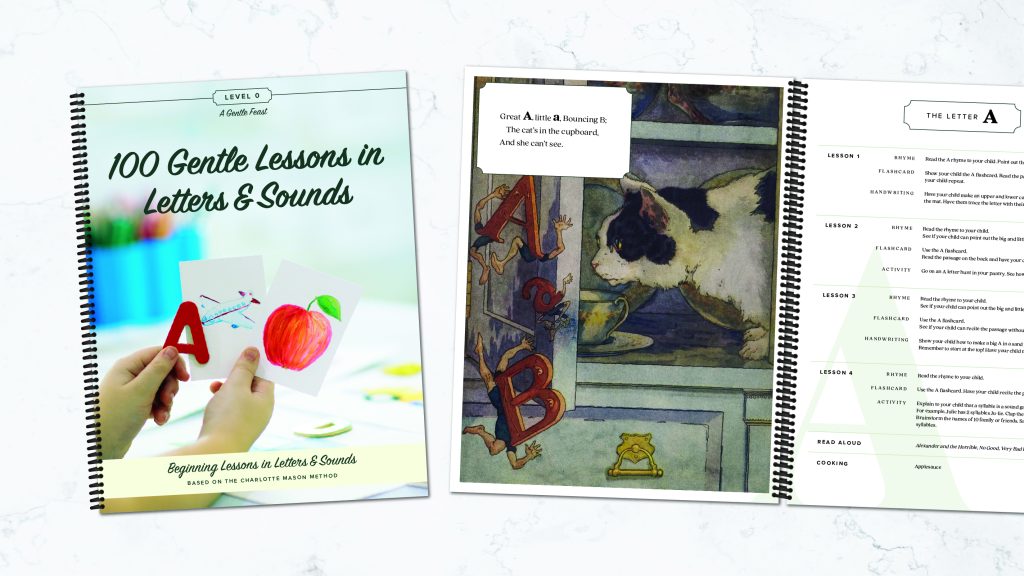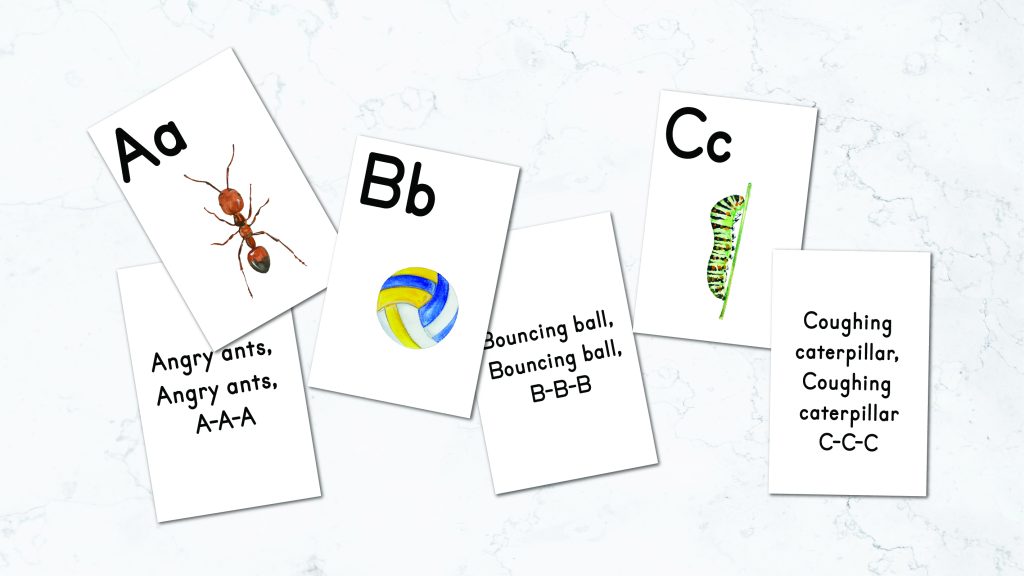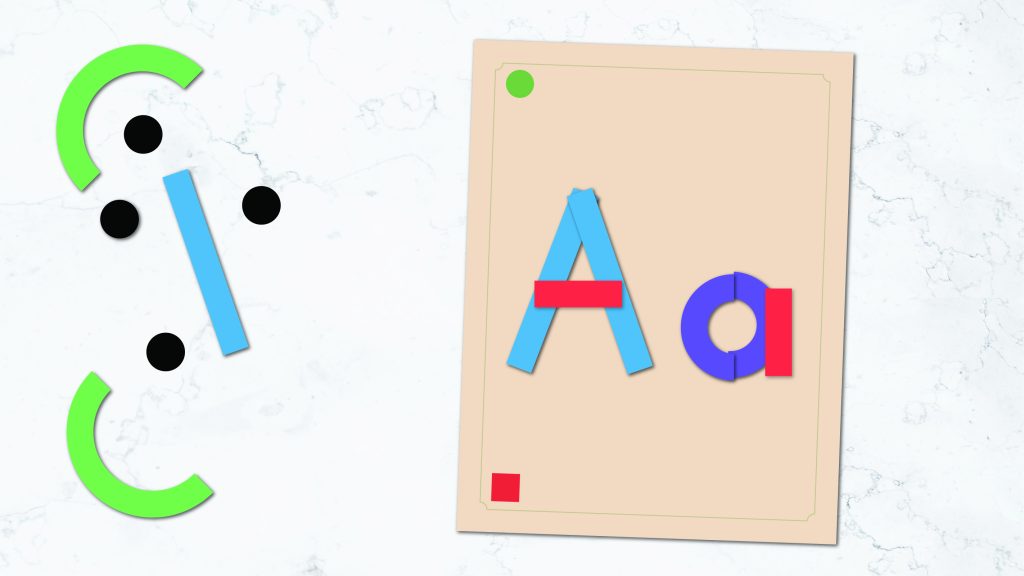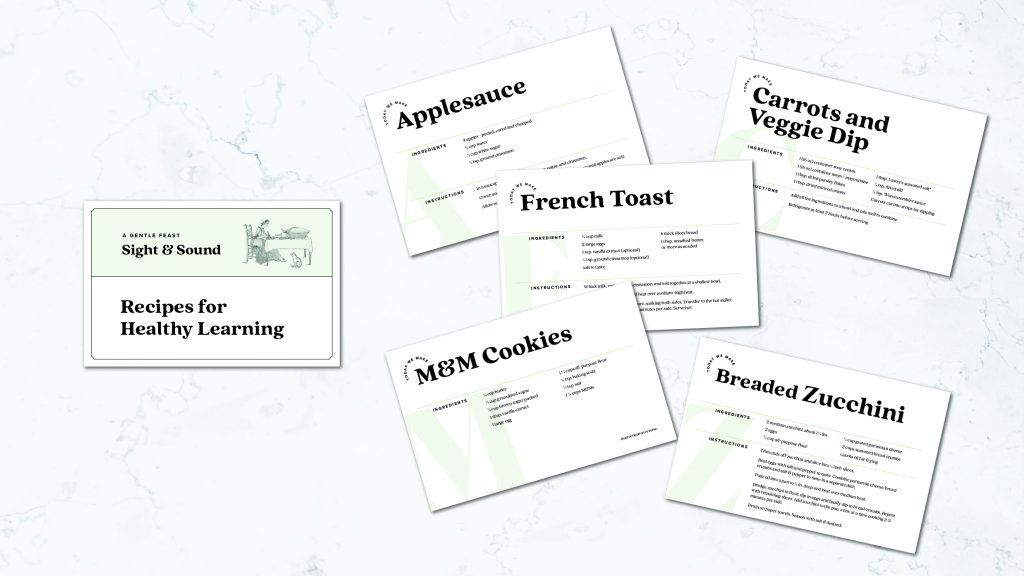
100 Gentle Lessons in Letters and Sounds is based on the natural development of children. Children are able to hear and speak sounds before they are able to visually discriminate or write. Therefore, a child needs to hear and speak sounds before they are ever able to start reading or writing their letters. This “hear and speak” instruction should be done in a playful way, waiting to begin formal reading lessons until the child is ready.
“Let the child alone, and he will learn the alphabet for himself: but few mothers can resist the pleasure of teaching it; and there is no reason why they should, for this kind of learning is no more than play to the child, and if the alphabet be taught to the little student, his appreciation of both form and sound will be cultivated. When should he begin? Whenever his box of letters begins to interest him. The baby of two will often be able to name half a dozen letters; and there is nothing against it so long as the finding and naming of letters is a game to him.”- Charlotte Mason, Home Education, pg.201
100 Gentle Lessons in Letters and Sounds is structured to build a child’s phonemic skills along this developmental path in a playful and engaging manner. Each week contains 4 days of lessons with an optional read aloud and cooking activity based around that week’s letter focus. The lesson components include:
- Nursery Rhymes:
Children LOVE nursery rhymes. They engage a child’s delight and curiosity for learning language. The ability to discriminate and build rhymes is a foundational phonemic awareness skill. Enjoy reading these delightful rhymes to your child each day of the week.

2. Letter Flashcards:
Each letter sound is introduced and reviewed through a playful rhyme. Using hand and body motions, these rhymes engage the mind and body, helping to move the sound-letter connection to long term memory. Feel free to review any flashcards weekly that your child may be struggling with after introducing the new card of the week.
3. Handwriting:
The fine motor skills involved with letter formation typically develop after a child’s oral and auditory letter recognition. Therefore writing with paper and pencil is NOT recommended for this stage. Rather, children should recognize and form their letters through sensory engaging methods. Charlotte Mason recommended the following approach,
“Make big B in the air, and let him name it; then let him make round O, and crooked S, and T for Tommy, and you name the letters as the little finger forms them with unsteady strokes in the air. To make the small letters thus from memory is a work of more art, and requires more careful observation on the child's part. A tray of sand is useful at this stage. The child draws his finger boldly through the sand, and then puts a back to his D; and behold, his first essay in making a straight line and a curve. But the devices for making the learning of the 'A B C' interesting are endless. There is no occasion to hurry the child: let him learn one form at a time, and know it so well that he can pick out the d's, say, big and little, in a page of large print. Let him say d for duck, dog, doll, thus: d-uck, d-og, prolonging the sound of the initial consonant, and at last sounding d alone, not dee, but d', the mere sound of the consonant separated as far as possible from the following vowel” - Home Education, pg.201

Each week you will introduce letter formation through the letter pieces. Have your child make the letter on the mat. Then have your child trace the letter with their finger, making sure they start at the top and trace down. Later in the week, have your child form the letters in a sand tray. You will want to review letters learned as your progress through the lessons.
4. Phonemic Awareness Activity
Each week there are several activities. These are designed to train a child’s ear and tongue to recognize letter sounds. In a similar manner of how a baby can first hear and understand, children first develop the ability to hear and recognize letter sounds. Then they can orally make these sounds just like when a baby first starts talking. Phonemic awareness develops along a similar pattern- auditory, oral, then visual discrimination. The weekly activities included in 100 Gentle Lessons in Sight and Sound are designed to follow this developmental timeline, gradually increasing a child’s understanding of sounds using their ears, tongues, and eyes.
Each week also includes these optional elements:
- Read Aloud- Each week there is an optional read aloud that relates to the letter of the week. Most of these books can be obtained from the library. These are delightful stories and can easily be read when it is convenient for your family.
- Cooking- One of the aspects of home life that I loved when my children were little was making special recipes. So many skills can be learned in the kitchen! There is a recipe included that ties in with each letter of the alphabet. These of course are optional, so don’t put any pressure on yourself and enjoy as your time allows.

Please note this is a printed product. No downloads are included. Your kit will be shipped it to you!
Click HERE to see a sample.
\Watch this video to see an unboxing of the 100 Gentle Lessons in Letters and Sounds kit:
This video shows the motions and sounds for the Alphabet Flashcards:
Want to know more about the theory behind 100 Gentle Lessons in Letters and Sounds, take a listen to this recent podcast:
Additional information
| Weight | 2.6 lbs |
|---|---|
| Dimensions | 11 × 8.5 × 1 in |

